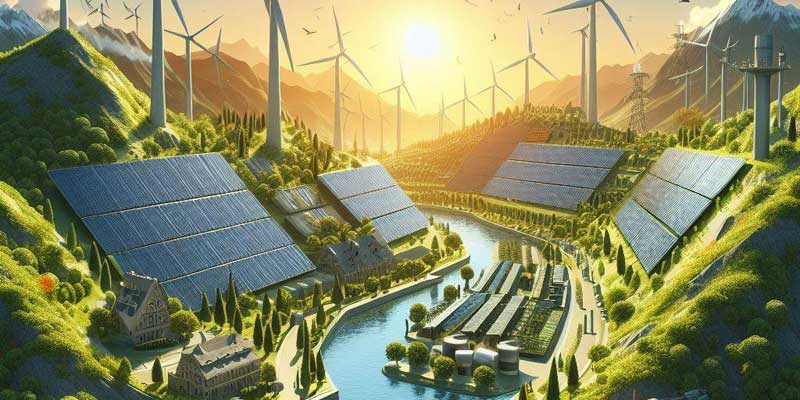Introduction of Climate Change and Renewable Energy
Climate change is one of the most pressing challenges of our time, and the need for sustainable solutions has never been more urgent. Among the various strategies to mitigate climate change, transitioning to renewable energy sources stands out as a crucial and promising avenue. In this blog post, we will delve into the benefits and challenges associated with harnessing the power of renewable energy, focusing on solar, wind, and hydropower.
Solar Energy: A Beacon of Clean Power
Solar energy, derived from the sun’s rays, has emerged as a beacon of clean power in the fight against climate change. The benefits of solar energy are vast and varied. Firstly, it is an abundant and inexhaustible resource, providing an environmentally friendly alternative to finite fossil fuels. The installation of solar panels reduces dependence on traditional energy sources, decreasing greenhouse gas emissions and mitigating the adverse effects of global warming.
Furthermore, solar energy systems require minimal maintenance, making them a cost-effective and sustainable option in the long run. As technology advances, the efficiency of solar panels continues to improve, making solar energy an increasingly viable and competitive choice for both residential and industrial applications.
However, the widespread adoption of solar energy is not without its challenges. The intermittency of sunlight and the dependency on weather conditions can affect the consistent generation of power. Additionally, the production and disposal of solar panels pose environmental concerns. As the industry grows, addressing these challenges becomes imperative for a truly sustainable solar future.
Harnessing the Wind: Wind Energy’s Promise and Challenges
Wind energy, harnessed through the kinetic energy of moving air, has rapidly gained traction as a reliable renewable energy source. The benefits of wind power are multifaceted. Wind turbines generate electricity without emitting greenhouse gases or other pollutants associated with conventional energy sources. The land footprint of wind farms is relatively small, allowing for dual land use, such as agriculture.
Onshore and offshore wind farms have the potential to meet a significant portion of global electricity demand. The scalability and adaptability of wind energy make it a versatile solution for diverse geographical locations. Additionally, technological advancements in turbine design and efficiency contribute to the competitiveness of wind power.
Despite its promise, wind energy faces challenges, including intermittency, noise concerns, and visual impact. Integrating large-scale wind farms into existing energy grids requires careful planning to ensure a stable and reliable power supply. Striking a balance between maximizing energy output and minimizing environmental and social impacts is a key consideration in the widespread adoption of wind energy.
Hydropower: Tapping into the Flow of Sustainability
Hydropower, derived from the energy of flowing water, has long been a stalwart in the renewable energy landscape. The benefits of hydropower are substantial. It is a reliable and dispatchable source of electricity, providing a stable power supply that can be adjusted to meet fluctuating demand. Hydropower also contributes to water management, flood control, and irrigation, showcasing its multifunctional role.
The environmental impact of hydropower varies depending on the scale and design of the project. While large dams can have significant ecological consequences, small-scale hydropower projects with careful planning can minimize adverse effects on aquatic ecosystems.
Challenges associated with hydropower include habitat disruption, sedimentation, and social considerations related to displacement and land use changes. Striking a balance between the benefits and challenges requires comprehensive planning, environmental impact assessments, and community engagement.
Conclusion
In conclusion, renewable energy sources like solar, wind, and hydropower play a pivotal role in combating climate change. Their environmental benefits, coupled with technological advancements, make them increasingly viable alternatives to traditional fossil fuels. However, addressing the challenges associated with intermittency, environmental impact, and social considerations is essential for a successful transition to a sustainable energy future. As we navigate the complexities of this transition, it is clear that the collaboration of governments, industries, and communities is crucial to harnessing the full potential of renewable energy in the fight against climate change.








